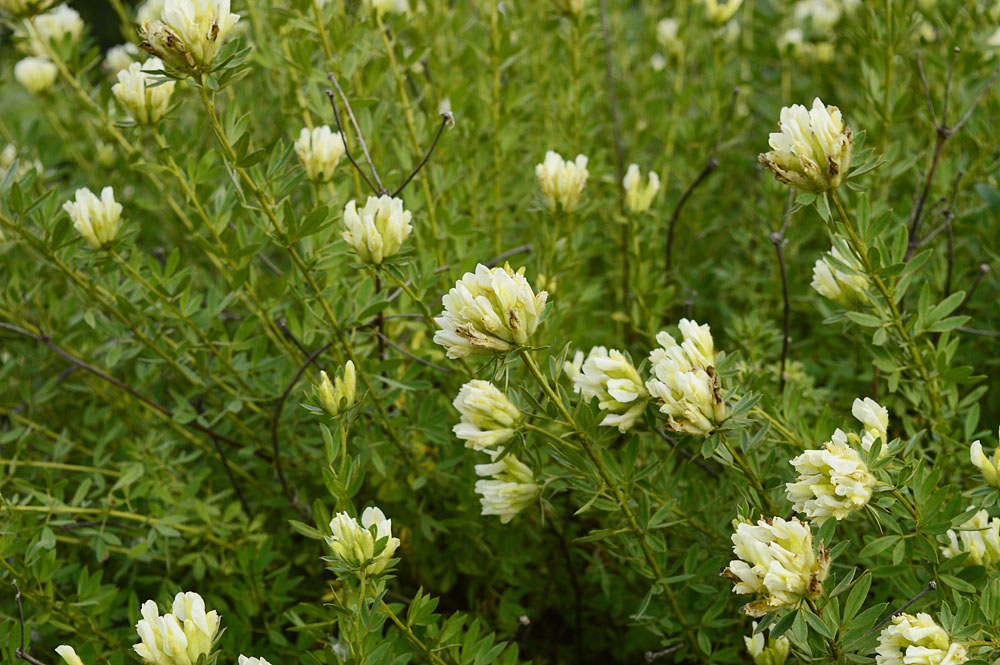Description
Chamaecytisus –
There are about 30 species of fast growing, short lived, evergreen and deciduous, occasionally spiny, small trees, shrubs, and subshrubs, in this genus. They mainly occur on hillsides and in open woodland from sea level to 7,000′ feet high in Eurasia, and the Canary Islands. They have alternate, 3 palmate leaves, sometimes with softly hairy, leaflets, and are grown for their clusters of pea like, usually yellow, sometimes purple to pink shades or white flowers. Grow on a sunny bank or in a shrub border, rock garden, trough, or raised bed.
Tolerant of a range of soil types, including poor, dry soil, nitrogen poor, but not shallow, alkaline soil in full sun. They resent root disturbance, hard pruning since plant seldom recover fully.
C. albus – Portuguese Broom – From Southwestern European to Southern Poland, this plant grows 3′ feet tall and produces leaves composed of 1″ long leaflets, usually entirely covered in fine hairs. In summer and autumn it bears white or pale yellow flowers, carried in terminal head of up to 10 blooms. Low growing forms make attractive rockery plants.
Zones 6-10





